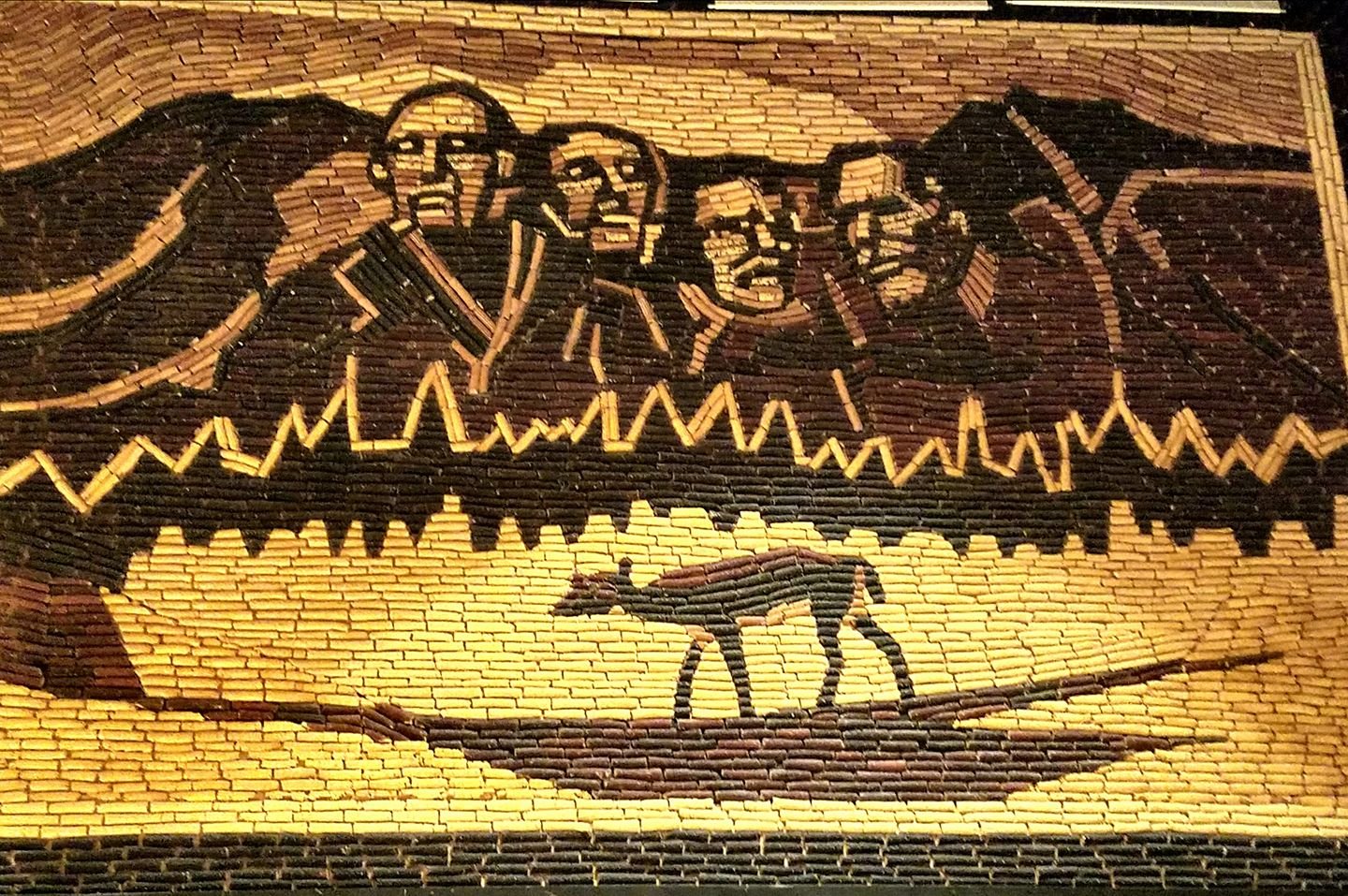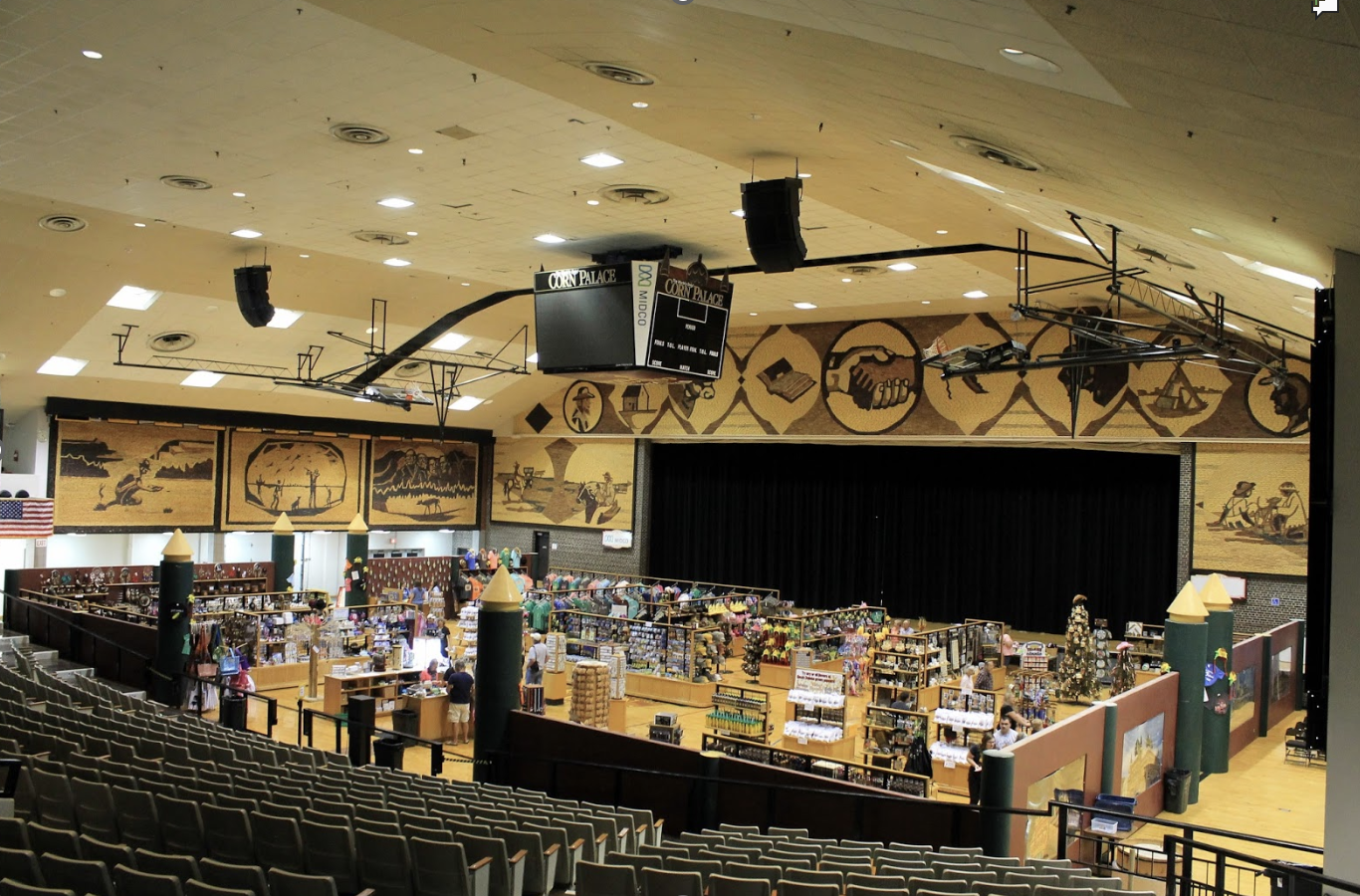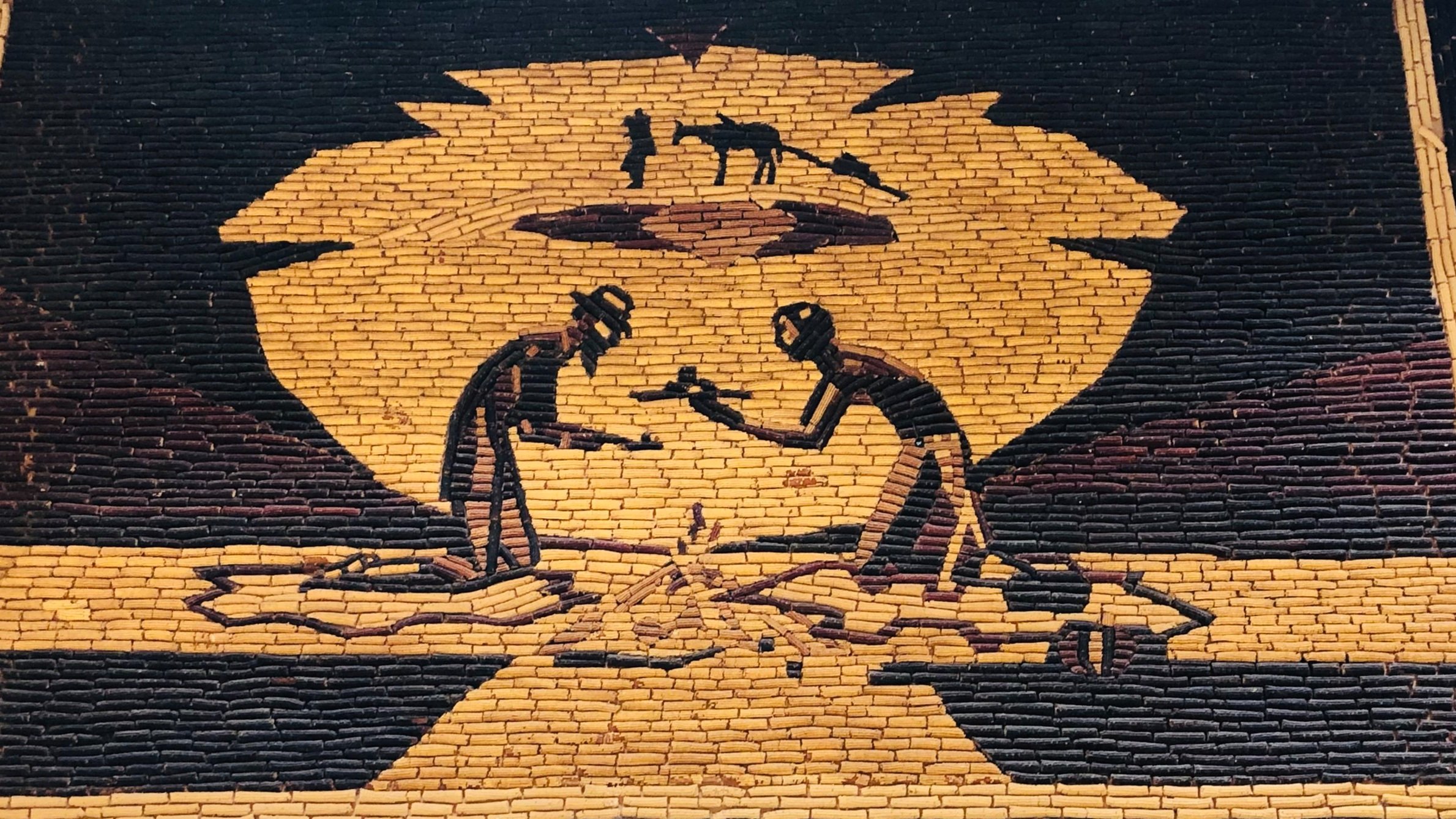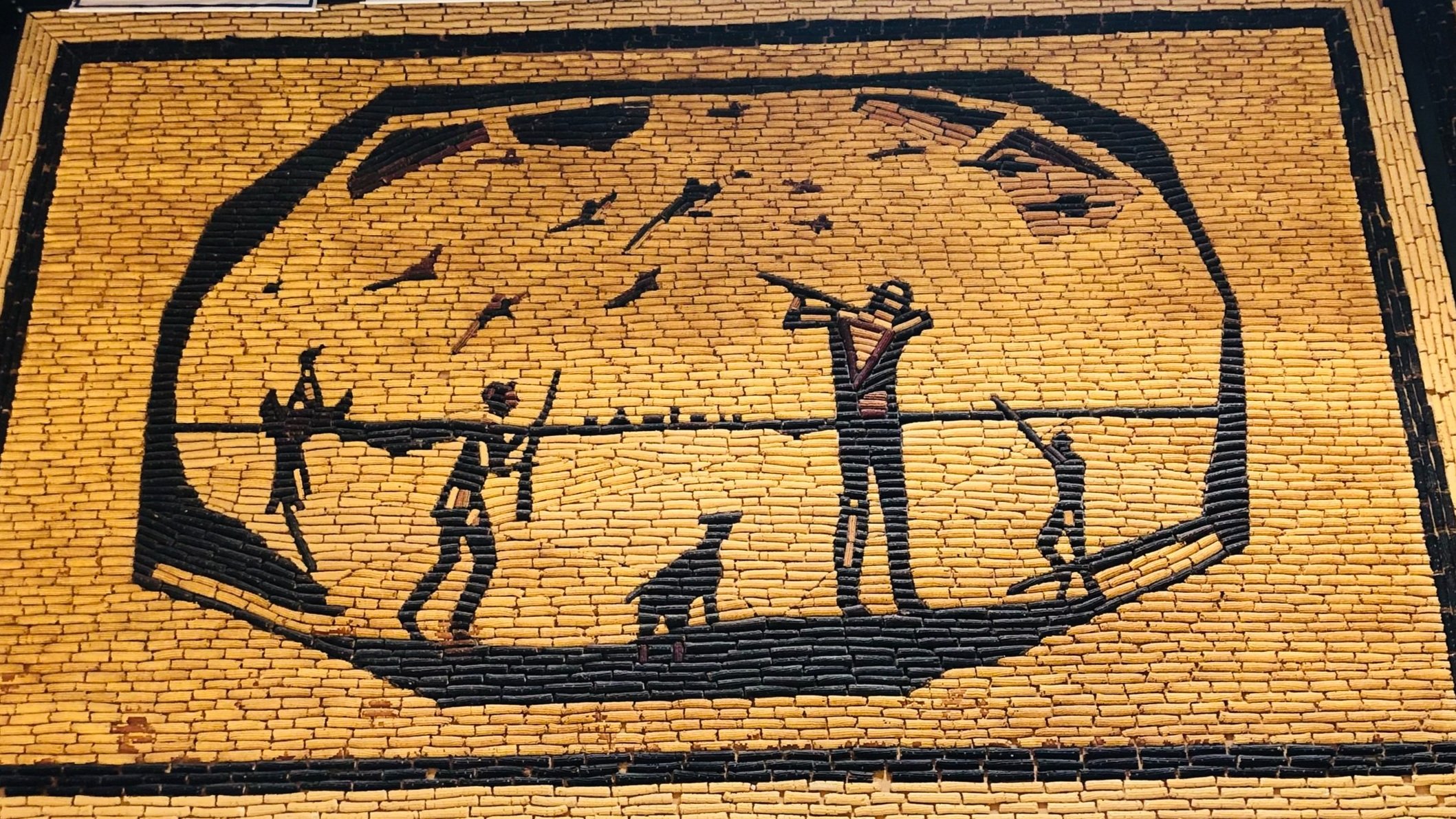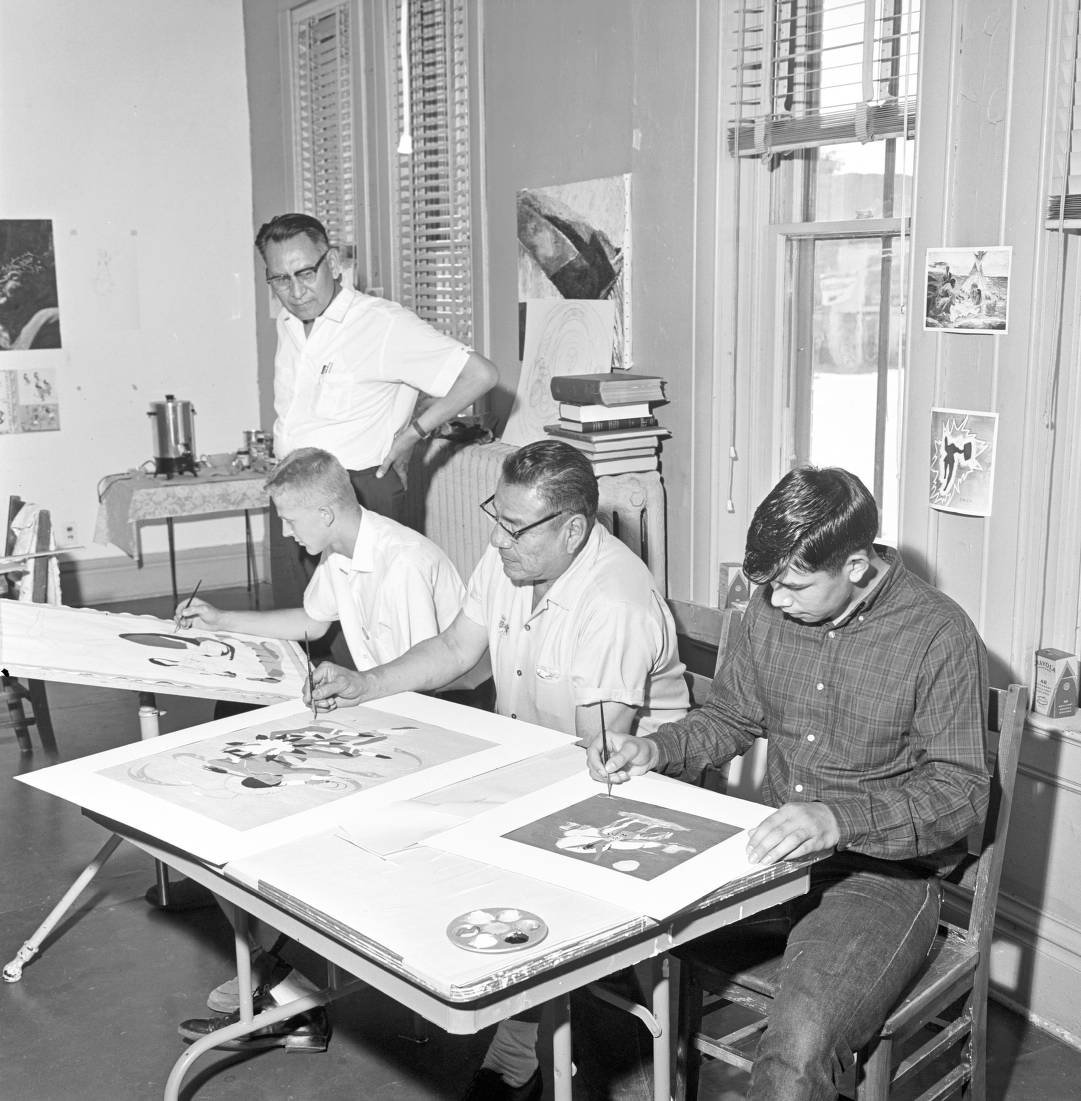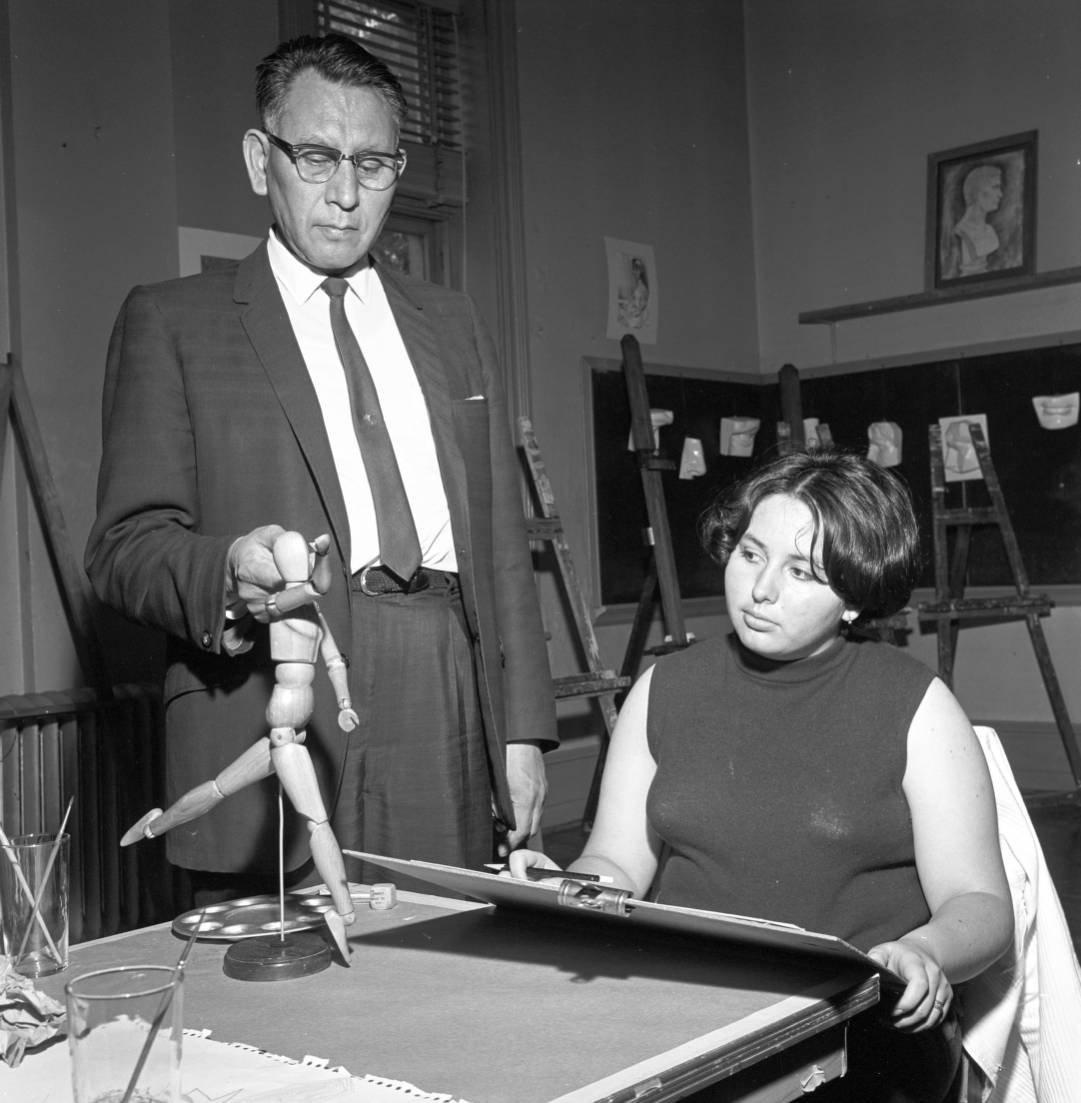Legend Oscar Howe
Artist, Mentor & Teacher | 1979 INDUCTEE
Oscar Howe was an amazing artist born in 1915 on the Crow Creek Reservation in South Dakota. He belonged to the Yanktonai Nakota Sioux tribe, and his real name, Mazuha Hokshina, meant Trader Boy. Even as a young boy, Oscar loved drawing lines and creating designs, showing his natural talent for art. His grandma, Shell Face, taught him how to paint on buffalo hides and shared many Sioux stories with him.
After learning more about art in New Mexico, Oscar returned to South Dakota and became a famous artist. He painted big murals and even designed a dome for a library!
When he was in the army during World War II, his time in Europe changed how he painted. Even though some people didn't understand his unique style of "Indian" art, Oscar kept believing in himself. He became known as the "Father of the New Native American Art".
Oscar was a Distinguished Professor and Artist-in-Residence at the University of South Dakota in Vermillion for 25 years. During his career he received many honors and awards, including Artist Laureate of South Dakota and the South Dakota’s Governor’s Award for Creative Achievement. He retired from USD in 1980.
Oscar Howe’s story illustrates how a man can overcome poverty, illness, and the prejudice of others to become a world-renowned artist and educator. His determination to bring Native American art into the modern world is his legacy.
The Art of Painting
Oscar loved to draw and paint. His grandmother taught him the art of painting on buffalo skins and when he became a professional artist, he used Fabriano paper which had a texture like buffalo hides.
Oscar Understood the Importance of Education...
Oscar’s Education:
Pierre Indian School – Elementary School
Santa Fe Indian School – High School, 1938
Dakota Wesleyan University, Mitchell, SD – Bachelor of Arts Degree, 1953
University of Oklahoma - Master’s Degree 1954
Oscar’s Teaching Career:
Pierre High School
The University of South Dakota
Oscar was drafted into the United States Army during World War II. He served for three years.
Virtual Tour of the Oscar Howe Exhibition at the South Dakota Art Museum at South Dakota State University
A Mini Documentary on Oscar Howe
Mobridge Murals
In 1941 and 1942, Oscar worked for the Works Progress Administration (WPA) program which was developed during the Great Depression in the United States to provide jobs for those unemployed. Oscar was paid by the WPA to paint murals in South Dakota. He painted ten murals in Mobridge, SD.
He also painted a mural in the Carnegie Resource Center in Mitchell, SD. For more information on murals painted by Oscar Howe, please see the following:
“Not Indian”
In 1958, Oscar entered an art competition, but the organization rejected his work saying it was a “fine painting–but not Indian.”
However, Oscar responded in a letter stating, “Who ever said, that my paintings are not in the traditional Indian style, has poor knowledge of Indian art indeed. There is much more to Indian Art, than pretty, stylized pictures,” he wrote in a letter to the Philbrook. He added: “We are to be herded like a bunch of sheep, with no right for individualism, dictated as the Indian has always been, put on reservations and treated like a child, and only the White Man knows what is best for him.”
Read & Watch: Native Artist Oscar Howe Didn’t Conform to ‘Indian Art’
Courtesy of KELOLAND Media Group
Murals at The World's Only Corn Palace
Oscar designed the murals at The World’s Only Corn Palace in Mitchell, SD from 1948 to 1971. Below are some of Oscar’s original designs which were preserved and can now be seen inside the Corn Palace.
Oscar Howe Summer Art Institute
Although Oscar became a famous artist, he most cared about helping to develop Native American artists.
In 1960 while teaching at the University of South Dakota, Oscar began offering art classes in the summer to high school students. This became known as the Oscar Howe Summer Art Institute.
Oscar’s daughter, Inge Dawn, once stated, “I think he touched all his students with inspiration for setting goals in your life and feeding your creative spirit,” Inge Dawn said. “He certainly respected individuality and positivity in life. He believed it was everyone’s responsibility to make the world a better place by connecting with and respecting your own culture so you can expand your horizons to value and appreciate other cultures.” (Felecos, 2023)
Felecos, T. (2023, July 13). The art and legacy of Oscar Howe. The South Dakotan. Retrieved October 19, 2023, from https://www.usd.edu/the-south-dakotan/the-art-and-legacy-of-oscar-howe
Awards
Over a forty-year career, Howe earned many honors and awards, including numerous grand and first prizes in national competitions.
As a student in Santa Fe, Howe exhibited works in New York, London and Paris and subsequently was represented in over fifty solo shows.
In 1954, Howe was named Artist Laureate of South Dakota.
In 1966, he was awarded the Waite Phillips trophy for outstanding contributions to American Indian art from the Philbrook Art Center, Tulsa, Oklahoma.
Howe was the first recipient of the South Dakota Governor's Award for Creative Achievement in 1973.
He received the Golden Bear Award from the University of Oklahoma, Norman, in 1970.
Oscar Howe presented with Artist Laureate of South Dakota designation by Governor Ralph E. Herseth at Inman Field at the University of South Dakota preceding the annual Dakota Day game
Reflection:
Oscar’s grandmother taught him the art of painting on buffalo hides and told him stories and legends of the Native American People.
How do you think the interactions with his grandmother influenced his art?
Explain a connection between the time Oscar spent with his grandmother and his career?
Oscar once submitted a piece of art to an Indian art competition and was told the art piece was not ‘Indian’.
Why do you think the people at the art competition rejected his work for this reason?
How did Oscar respond?
What leadership skills did this experience help develop in Oscar?
Oscar’s art work was eventually known throughout the world.
Why do you think he chose to stay and teach art in South Dakota?
How does Oscar’s story inspire you?
















